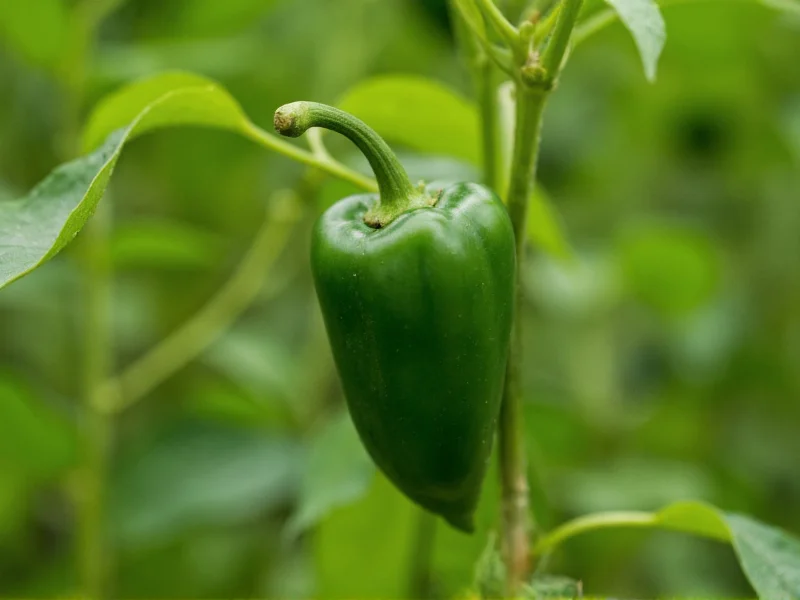Understanding Jalapeño Heat Levels
When you bite into a jalapeño pepper, you're experiencing capsaicinoids—the chemical compounds responsible for that characteristic burn. The Scoville scale, developed by pharmacist Wilbur Scoville in 1912, measures the concentration of these compounds in Scoville Heat Units (SHU). For home cooks and spice enthusiasts searching for jalapeno scoville scale range information, understanding this measurement system is essential.
Jalapeños occupy a sweet spot on the Scoville scale that makes them accessible to most palates while still providing noticeable heat. Unlike extremely hot peppers that require careful handling, jalapeños deliver a manageable burn that enhances dishes without overwhelming them. This characteristic explains their popularity in everything from salsas to stuffed appetizers.
Comparing Jalapeños to Other Common Peppers
| Pepper Type | Scoville Heat Units (SHU) | Heat Level Description |
|---|---|---|
| Bell Pepper | 0 SHU | No heat |
| Jalapeño | 2,500–8,000 SHU | Mild to medium |
| Serrano | 10,000–23,000 SHU | Medium to hot |
| Habanero | 100,000–350,000 SHU | Very hot |
| Ghost Pepper | 855,000–1,041,427 SHU | Extremely hot |
Factors That Influence Jalapeño Heat Levels
Understanding why are some jalapenos hotter than others requires examining several environmental and biological factors:
Growing Conditions
Peppers develop more capsaicin when stressed. Jalapeños grown in hotter, drier climates with less water typically reach the higher end of their jalapeno scoville units chart range. Commercial growers sometimes intentionally stress plants to produce hotter peppers for specific markets.
Ripeness
As jalapeños mature and change color from green to red, their heat level increases. Red jalapeños generally measure higher on the Scoville scale than their green counterparts. The red variants also develop more sweetness alongside the increased heat.
Seed and Rib Content
The white ribs (placenta) inside the pepper contain the highest concentration of capsaicin. When preparing jalapeños, removing these ribs significantly reduces the heat level. This explains why some stuffed jalapeño recipes remain mild despite using the same pepper variety.
Practical Implications for Cooking
Knowing the jalapeno heat level compared to other peppers helps home cooks make informed decisions. For those wondering how hot are jalapeno peppers in practical terms, consider these real-world comparisons:
- A single jalapeño contains roughly the same heat as 250 times the amount found in black pepper
- It would take approximately 20–30 jalapeños to match the heat of one habanero pepper
- The average jalapeño is about 10 times milder than a cayenne pepper
When substituting peppers in recipes, remember that heat perception varies among individuals. What seems mild to one person might feel quite hot to another. Always taste a small piece before adding significant quantities to your dish.
Common Misconceptions About Jalapeño Heat
Several myths persist about jalapeno pepper heat measurement. Let's clarify the most common ones:
Myth: All Jalapeños Taste the Same
Reality: Significant variation exists between individual peppers, even from the same plant. Two jalapeños sitting side by side in the grocery store could have dramatically different heat levels.
Myth: Smaller Jalapeños Are Always Hotter
Reality: While size can sometimes correlate with heat (smaller peppers may indicate more plant stress), this isn't a reliable indicator. Heat depends more on growing conditions than physical size.
Myth: Cooking Reduces Jalapeño Heat Significantly
Reality: Capsaicin is relatively stable when heated. While prolonged cooking can slightly mellow the heat, don't expect dramatic reductions in spiciness through cooking alone.
Safety Tips for Handling Hot Peppers
When working with jalapeños or hotter varieties, follow these safety guidelines:
- Wear gloves when handling, especially when removing seeds and ribs
- Avoid touching your face, particularly eyes, while working with peppers
- Wash hands thoroughly with soap and water after handling
- If experiencing burning sensation, use dairy products (milk, yogurt) rather than water to neutralize capsaicin
Remember that capsaicin transfers easily to other surfaces. Clean cutting boards and knives thoroughly after preparing hot peppers to prevent accidental exposure later.
Conclusion
The Scoville scale measurement for jalapeños (2,500–8,000 SHU) provides valuable context for understanding their place in the world of chili peppers. This jalapeno scoville level makes them versatile enough for everyday cooking while still delivering that characteristic kick that enhances so many dishes. Whether you're a home cook experimenting with new recipes or someone trying to understand pepper heat measurements, recognizing the factors that influence jalapeño spiciness helps you make informed choices in the kitchen.
Frequently Asked Questions
What is the average Scoville rating for a jalapeño pepper?
The average jalapeño pepper measures approximately 5,000 Scoville Heat Units, though they can range from 2,500 to 8,000 SHU depending on growing conditions and specific variety.
How does jalapeño heat compare to other common peppers?
Jalapeños are significantly milder than habaneros (100,000-350,000 SHU) and ghost peppers (855,000-1,041,427 SHU), but noticeably hotter than poblano peppers (1,000-2,000 SHU). They're about 10 times milder than cayenne peppers.
Why do some jalapeños taste much hotter than others?
Several factors affect jalapeño heat levels including growing conditions (drier, hotter climates produce hotter peppers), ripeness (red jalapeños are typically hotter than green ones), and the specific amount of capsaicin concentrated in the seeds and white ribs.
Can I reduce the heat of a jalapeño before cooking with it?
Yes, removing the seeds and white ribs (placenta) significantly reduces heat, as these parts contain the highest concentration of capsaicin. Soaking sliced jalapeños in salt water or milk for 15-30 minutes can also mellow the heat slightly.
Are red jalapeños hotter than green ones?
Generally yes. As jalapeños ripen and turn from green to red, they develop more capsaicin and become hotter. Red jalapeños also develop more sweetness, creating a more complex flavor profile compared to their green counterparts.











 浙公网安备
33010002000092号
浙公网安备
33010002000092号 浙B2-20120091-4
浙B2-20120091-4